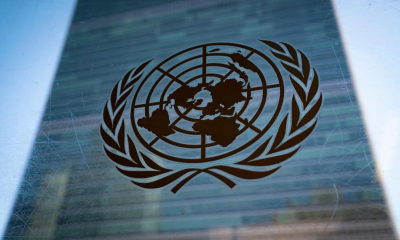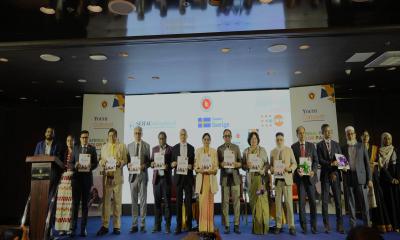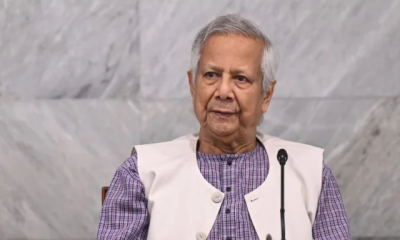This year, Egypt is ground zero for two of the world’s biggest crises—food and climate. Egypt is the world’s largest importer of wheat, including from Ukraine. Russian aggression there has worsened the already rising risk of humanitarian catastrophes. Grain prices are now around 17 percent higher than during the Arab Spring in 2011, when food inflation and street protests in Egypt toppled the 30-year dictatorship of Hosni Mubarak.
A recent United Nations report estimates that up to 49 million people are now at risk of falling into famine or famine-like conditions globally, an all-time high. Climate change has exacerbated the present crisis—worsening drought in parts of Africa and the Middle East, and making the kind of heat waves that have killed dozens of people and reduced harvests in India 30 times as likely. In turn, the global food system was found in 2015 to be responsible for 34 percent of greenhouse gas emissions, primarily through the production of animal protein, energy use, food waste, and deforestation.
In November, Egypt will host the UN’s annual global climate summit. Egypt has called for nations to produce summit outcomes that simultaneously combat the climate and food emergencies. The United States needs to lead this effort, not only in response to Russian aggression and world hunger but also because for decades climate diplomacy has paid too little attention to the relationship between food and climate. The Biden administration has already taken important steps in this direction. To build on these efforts, the United States should lead a global high-ambition coalition to support a new initiative to alleviate suffering from the food crisis—and to do it in ways that create a global food system that provides nutrition for all, is climate-friendly, and protects nature. How?
First, and most importantly, nations need blueprints for how to provide nutritious, secure, and low-carbon food to the growing global population, starting with responses to today’s food and climate crises that are in line with international climate and development goals. Thanks to similar planning in recent years, the international community is more united on the steps needed to decarbonize the global energy sector in ways that provide energy for all: far more renewable energy, zero-emission vehicles, electric appliances, efficient buildings, clean hydrogen, and carbon storage.
When it comes to the food system, in contrast, policymakers have yet to reach consensus on how to simultaneously increase global food production, slash emissions from agriculture, and protect nature, while providing nutrition for all. Both globally and at the national level, consensus-building processes are needed to signal how investors and businesses should reallocate capital. Internationally, the G-20 (or, in the alternative, a US-led coalition of the willing) should commission such a plan from the UN and International Energy Agency. This plan could build on the recently released US-led Roadmap for Global Food Security, endorsed by the United States and 93 other UN member states. That plan focuses on near-term steps to address the present food crisis but does not provide an actionable blueprint for harmonizing the hunger, climate, and nutrition agendas over the long term. At the national level, countries should develop national food strategies—as the United Kingdom has done through whole-of-government planning—that address today’s hunger crisis, in ways that also promote climate action and better nutrition. This effort could build on already existing forums.
Second, the world needs to produce more food and improve agricultural livelihoods to enhance food security and eliminate extreme poverty. One of the best ways to do this is to get advanced seed varieties that increase yields to small-scale farmers. Adding to local production would improve food security, raise farm incomes, and reduce emissions from food transportation. In addition, increasing the productivity of land already in agricultural production is a key strategy for conserving forests and other natural areas that both preserve biodiversity and fight climate change by sequestering carbon.
To help small-scale farmers access advanced seed varieties, the United States should work with allies to augment existing international efforts in this area by establishing a public-private partnership to get the best seeds to poorer countries at low cost. Rich nations should guarantee bulk purchases to private seed companies to induce them to sell needed seed varieties to farmers at lower prices. In addition, the United States should work with other countries and the World Bank to reform and increase funding for CGIAR—the group of research organizations that brought about the almost miraculous increase in farm productivity known as the Green Revolution last century—to focus more on increasing yields and reducing emissions.
Third, the world needs to change the way it produces and consumes meat. Today, livestock production accounts for about 15 percent of annual global greenhouse gas emissions, more than any individual country except China. In the coming decades, moreover, livestock emissions are projected to increase as population and incomes rise. In addition, the UN has found that one of the most likely causes of the next pandemic is animal protein production.
Two key strategies will help make it possible to meet rising demand without increasing emissions or fueling pandemics. First, livestock producers must take steps to reduce greenhouse gas emissions per unit of meat. Promising strategies include feeding livestock better food and providing better health care. In addition, both public and private sector actors should invest in a new generation of alternative, sustainable proteins that mimic the taste and texture of meat without the use of live animals. At present, higher costs are a major barrier to wider uptake of these innovative products, but with concerted, well-funded efforts by researchers, innovation in fermentation and food processing technologies could make sustainable proteins cheaper than animal proteins. As prices fall, many consumers will opt voluntarily for these more sustainable, lower-greenhouse-gas alternatives instead of more expensive and more polluting animal meat.
To work with other nations to promote efficient and sustainable proteins, the United States should make availability of low-greenhouse-gas protein a major goal in food and climate diplomacy. As an initial step, a US-organized coalition of nations could pledge to scale up funding for research, development, and commercialization of these kinds of proteins to $10 billion per year by 2030. US companies are leaders in low-greenhouse-gas protein technologies, and the economy would benefit from extending to this sector the tax incentives and loan programs currently available only to renewable energy.
Fourth, we must improve the way we produce and use fertilizer. While fertilizers will be crucial for the productivity increases necessary to feed a growing population, fertilizer production and use together account for around 5 percent of global greenhouse gas emissions. At the moment, moreover, fertilizer is scarce, and prices are up 30 percent since the beginning of 2022 because Russia, a major fertilizer producer, has instituted an export ban. In the near term, three key steps would help to prevent future supply shocks and reduce food system emissions. To begin, farmers must adopt precision agriculture technology that will enable them to use only as much fertilizer as necessary. Today, many farmers over-apply fertilizer because they lack such technologies. Also, governments should incentivize farmers to plant seed varieties that require less fertilizer where this is practical. Third, nations should secure their fertilizer supply chains by diversifying production to make them less dependent on Russia and other unreliable trading partners. The Biden administration has recently taken important steps on all three fronts. Looking further ahead, however, it is essential that the world take steps to increase its capacity to produce green fertilizer, which is made from ammonia produced with renewable energy instead of natural gas. To make this happen, the United States should rally major economies in a commitment to scaling up green fertilizer production and work with other wealthy nations to fund capacity-building measures for developing countries to increase green fertilizer production.
Fifth, we must dramatically reduce food waste, which not only reduces the supply of food available to combat hunger but also accounts for around 8 percent of global climate pollution. Today, one-third of food goes to waste, much of it due to lack of refrigeration in developing countries. Demand for cooling and refrigeration technology is already projected to more than double as the world warms and both population and incomes rise, and with this growth, both food waste and associate emissions should decline. However, unless new refrigerators are highly efficient and use climate-friendly refrigerants, a buildout of refrigeration capacity will increase climate pollution. Accelerating the adoption of climate-friendly refrigeration could reduce global warming by 0.5 to 1 degree Celsius, making clean refrigeration one of the largest and most cost-effective climate solutions on the planet.
To help developing countries access energy-efficient, climate-friendly refrigeration, the United States should work with donor nations to quadruple global funding for phasing down older refrigerants. Currently, only $25.5 million is available for this purpose through the Montreal Protocol Multilateral Fund, a fund associated with implementing the Kigali accord, a treaty that the US Senate Foreign Relations Committee has approved but that awaits action by the full Senate. In addition, the United States should convince rich nations to increase bilateral aid for efficient refrigeration and encourage major companies to invest in efficient cooling projects in order to receive carbon credits that count toward corporate climate pledges.
A US-led coalition endorsing these policies during the Egyptian-hosted climate summit in November would represent a major, overdue contribution to combating global hunger and climate change by making the global food system greener, healthier, and more resilient.

























-20251218165258.jpeg)












